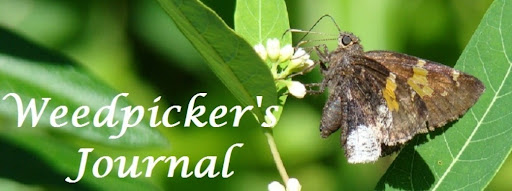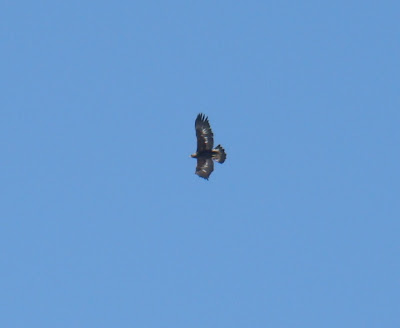If you are a big fan of Ohio's natural areas, you have probably heard of the Ohio Botanical Symposium. About 415 of Ohio's native plant people gathered in Columbus for an educational day of programs, vendors and the latest plant news. A special gathering of Sedge-heads were there to hear the great Tony Reznichek talk about one of the most confusing genus of the plant world, sedges.
One of the best places to look for rare plants is near rare habitats, and Richland county's Five-Finger Bog is a land trust property and frequent haunt of mine.

Today Jim McCormac presented the program on "Best Finds" from all over Ohio, including the Bog Willow, Salix pedicellaris, and Five-Finger cinquefoil, Potentilla palustris found at Five-finger Bog by a couple of the best botanist in Ohio: Rick Gardner and Steve McKee. I was honored to be along on that trip and photo documented the great day as shown above.
Others were credited with "Best Finds", too. Friends like Jason Larson, Daniel Boone, Janet Creamer, Tom Arbour and loads more- that I can't remember! I will try to get my hand on the list and post it in its entirety later. These are the people adding to our Ohio Heritage data base, and the important work of the Ohio Heritage botanists.

Another speaker was the well-known author Dr. Douglas Tallamy- if you don't own Bringing Nature Home yet, please click on the link and get it! I might help you re-think your whole perspective on landscape plants - and the species trying to make a living on them: caterpillars, spiders, bees, birds, frogs, bats and many mammals as well. Think about adding native plants to your landscape, and as Tallamy wrote in my copy of the book: "Garden as if life depends upon it!" Because, it does!
 Greater Mohican Audubon partners on many events each year and Shreve has become one of my favorites. It is not about the big names, not much flash or pizazz here, it is all about families. Kids garner much of the attention.
Greater Mohican Audubon partners on many events each year and Shreve has become one of my favorites. It is not about the big names, not much flash or pizazz here, it is all about families. Kids garner much of the attention. It was shoulder to shoulder on the observation platform at Funk Bottoms, and as always we shared our sightings and compared good finds.
It was shoulder to shoulder on the observation platform at Funk Bottoms, and as always we shared our sightings and compared good finds. Speakers, speakers, speakers... a full compliment of educational programing included a few of my friends: Laura Jones, Kim and Kenn Kaufmann, and of course, Jim McCormac- seen here being "wired" for sound by Joe Edinger. Joe is the man behind the scenes in Shreve for this wonderful event. He coordinates all the programs and volunteers and the million details to make this show go on. This is no small feat, as over 1022 people were in attendance at this "Sensation!"
Speakers, speakers, speakers... a full compliment of educational programing included a few of my friends: Laura Jones, Kim and Kenn Kaufmann, and of course, Jim McCormac- seen here being "wired" for sound by Joe Edinger. Joe is the man behind the scenes in Shreve for this wonderful event. He coordinates all the programs and volunteers and the million details to make this show go on. This is no small feat, as over 1022 people were in attendance at this "Sensation!"
































.JPG)

